We have a bunch of new members who are new to the AR platform. While we have fun adding furniture and accessories, one aspect of AR ownership that gets overlooked is cleaning.
I don't intend for this thread to devolve into cleaning arguments similar to those I have seen on other forums. For this thread, I think we can all agree on the basics of cleaning.
- Clean barrel/bore
- Clean chamber
- Clean bolt carrier group
This can be accomplished using very basic tools: rods, brushes, patches. There are several YouTube videos that illustrate the basic cleaning process.
There are tools beyond basic tools that can help make the cleaning process easier. I'm going to show some tools I own and tried out. I emphasize that none of these tools are necessary, but the make the job faster & easier.
The subject of lube choice & cleaning solvent choice is for a different thread.
Otis flexible rod cleaning kit:
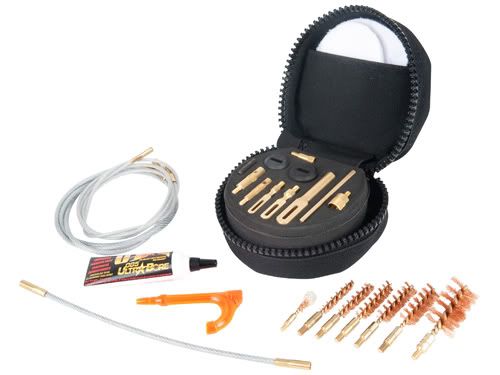
It replaces a one piece rod in favor of a polymer coated cable. This makes it easy to clean from breech to muzzle without worrying about dinging up the chamber or rifling. It uses brushes and patches just like we're used to.
Gunslick AR-15 Bore Guide:


If you use a one piece rod, then a bore guide makes the process easier with less worries about dinging up the chamber or rifling. The bore guide fits snugly into place. Push the rod through the bore guide. The bore guide has a port that matches to the ejection port of the AR. It is through this port that you can add solvents/lube to the patches, or spray cleaner down the barrel.
Hoppes Bore Snake
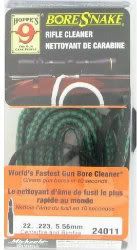
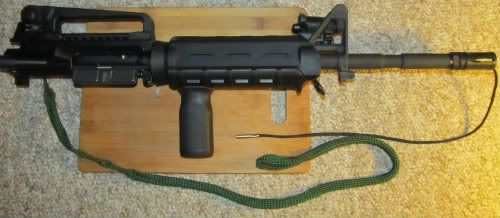

The bore snake is a pull through string that has bronze cleaning bristles integrated into it. Put some cleaning solvent on the section before the bristles, & pull through breech to muzzle.
In one pass it applies solvent, brushes, and swabs out the barrel. I usually pull the bore snake through three times. The bore snake can be washed and reused many times.
Talon Tactical Lug Scraping Tool


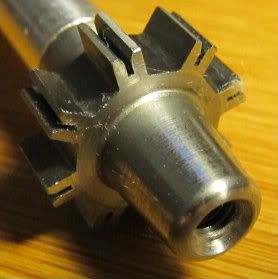
I use this tool when the lugs are seriously carbon fouled. The tool can clean the sides of the lugs. Gentle pressure and a twisting/pull motion is all that is necessary.
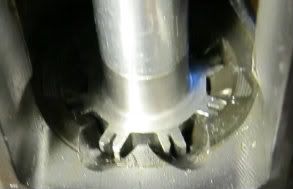
It also cleans the face of the lugs that we can't easily see.
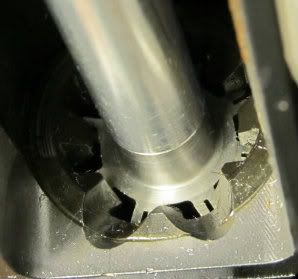
When contacting the face of the lug, light pressure and a twist scrapes off carbon deposits.
The Talon Tactical Lug Scraper also accepts any standard cleaning attachment on it's tip. It can be used as a cleaning device as illustrated in the next section.
Chamber Brushes
The chamber is bigger than the bore. I use one of two different tools to clean out the chamber. Both set ups are shown attached to the Talon Tactical lug scraper.
.40 Cal brush


I wet the brush with solvent, and scrub out the chamber. I then wrap a clean patch around the brush to swab out the chamber.
AR-15 Chamber Brush


Cleans the chamber & brushes the lugs.
CAT M4 BCG Cleaning Tool
By far the most useful cleaning tool I use.

It scrapes carbon deposits from the bolt tail with a quick and easy twisting motion.

It scrapes carbon from the BCG. Affix a patch to swab out the fouling.
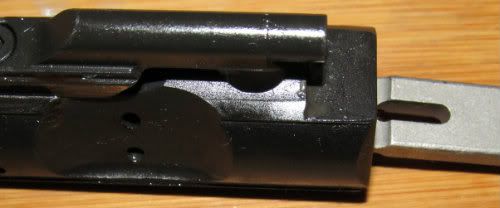
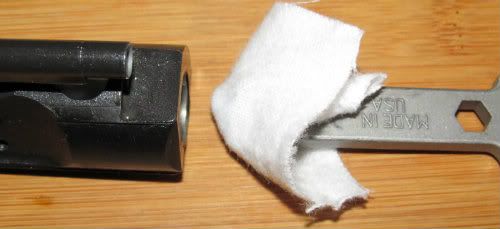
It also can be used to scrape carbon deposits from the firing pin.

Dental Pick

The good old dental pick. Works like a charm every time. Gets into hard to reach areas to scrape off carbon deposits. Just be careful using it. Use just enough pressure to remove carbon, but not ding up the metal.
There are also some other tools I find useful to have on hand.
Ejector Spring Installation/Removal Jig
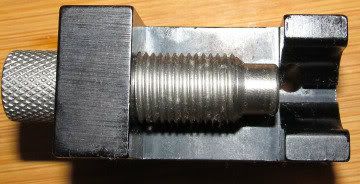
In order to remove/replace the ejector spring on the bolt, the ejector must be compressed. Then a small retaining roll pin must be driven out. The jig makes this job quick and simple.

Stock Wrench
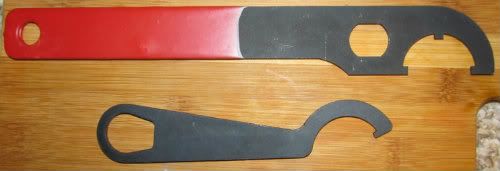
If you ever have to install/remove the stock castle nut, you'll need a stock wrench. I prefer to use the top castle nut wrench with the red handle. It provides a longer handle for leverage and grip. It also has three contact points for a more secure purchase onto the castle nut.
The spanner wrench on the bottom works, but it's more of a pain to use. The shorter handle provides less leverage. It only has a single contact point. If you're not careful, the spanner wrench will slip off the castle nut and you could end up scratching your AR.
Front Sight Tool

Makes adjusting the front sight easier. Just put it over the front sight, gently push down and twist.
If anyone else has other tools they use to maintain their AR's, post them up for other member's reference.
-John